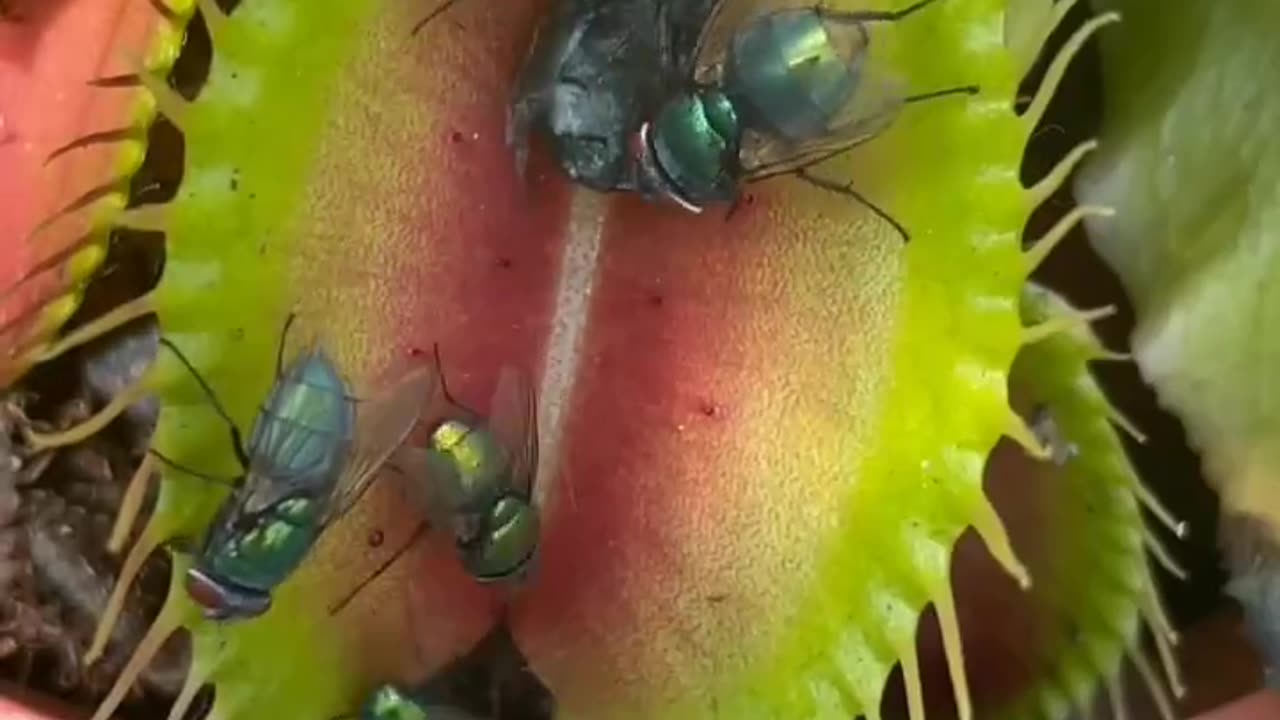Premium Only Content

Venus fly trap - Carnivorous plant
Venus fly trap - Carnivorous plant
The Venus flytrap (Dionaea muscipula) is a carnivorous plant native to the temperate and subtropical wetlands of North Carolina and South Carolina, on the East Coast of the United States. Although various modern hybrids have been created in cultivation, D. muscipula is the only species of the monotypic genus Dionaea. It is closely related to the waterwheel plant (Aldrovanda vesiculosa) and the cosmopolitan sundews (Drosera), all of which belong to the family Droseraceae. Dionaea catches its prey—chiefly insects and arachnids—with a "jaw"-like clamping structure, which is formed by the terminal portion of each of the plant's leaves; when an insect makes contact with the open leaves, vibrations from the prey's movements ultimately trigger the "jaws" to shut via tiny hairs (called "trigger hairs" or "sensitive hairs") on their inner surfaces. Additionally, when an insect or spider touches one of these hairs, the trap prepares to close, only fully enclosing the prey if a second hair is contacted within (approximately) twenty seconds of the first contact. Triggers may occur as quickly as 1⁄10 of a second from initial contact
The Venus flytrap is a flowering plant best known for its carnivorous eating habits. The “trap” is made of two hinged lobes at the end of each leaf. On the inner surfaces of the lobes are hair-like projections called trichomes that cause the lobes to snap shut when prey comes in contact with them. This type of movement is called thigmonasty—a nondirectional plant response to being touched. To prevent the plant from wasting energy if prey isn’t actually there, the trap will only shut when the trichomes are touched multiple times. The hinged traps are edged with small bristles that interlock when the trap shuts to ensure the prey can’t squirm out. There are other carnivorous plants in the wild, but the Venus flytrap is one of the very few that exhibits motion to actively trap its prey.
https://www.nwf.org/Educational-Resources/Wildlife-Guide/Plants-and-Fungi/Venus-Flytrap
-
 0:39
0:39
Rumble man
2 days agoBoat carrying Greta Thunberg hit by suspected drone
4.56K6 -
 LIVE
LIVE
The White House
34 minutes agoPresident Trump and the First Lady Attend a September 11th Observance Event
774 watching -
 1:10:14
1:10:14
JULIE GREEN MINISTRIES
2 hours agoWHAT DO WE DO NOW?
56.5K110 -
 LIVE
LIVE
The Bubba Army
22 hours agoCharlie Kirk's Killer On The Run - Bubba the Love Sponge® Show | 9/11/25
7,497 watching -
 16:58
16:58
Actual Justice Warrior
2 days agoBLM's Original HOAXER Killed By Black Crime
74K57 -
 LIVE
LIVE
RealAmericasVoice
3 days agoHOME OF REAL NEWS
7,924 watching -
 2:04:21
2:04:21
Badlands Media
18 hours agoDevolution Power Hour Ep. 388: Assassination, Inflection Points, and the Battle Ahead
368K131 -
 2:08:03
2:08:03
Inverted World Live
11 hours agoCharlie Kirk Assassinated | Ep. 106
140K69 -
 3:01:07
3:01:07
TimcastIRL
13 hours agoCharlie Kirk Assassinated, Suspect In Custody | Timcast IRL
697K1.16K -
 5:44:49
5:44:49
Redacted News
15 hours agoTurning the Tide: 9/11 Justice in 2025 — Day 1 with Sen. Ron Johnson, Richard Gage and More
219K97